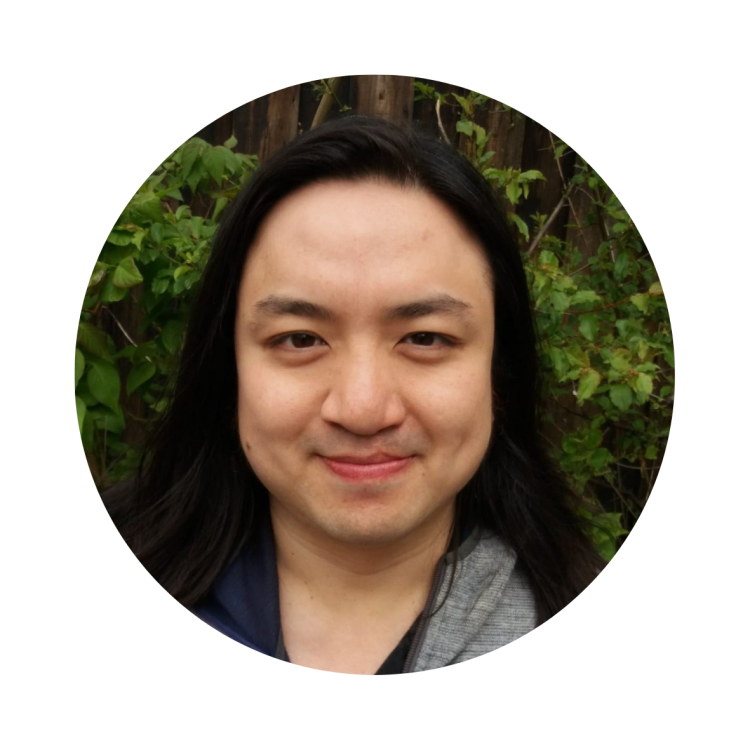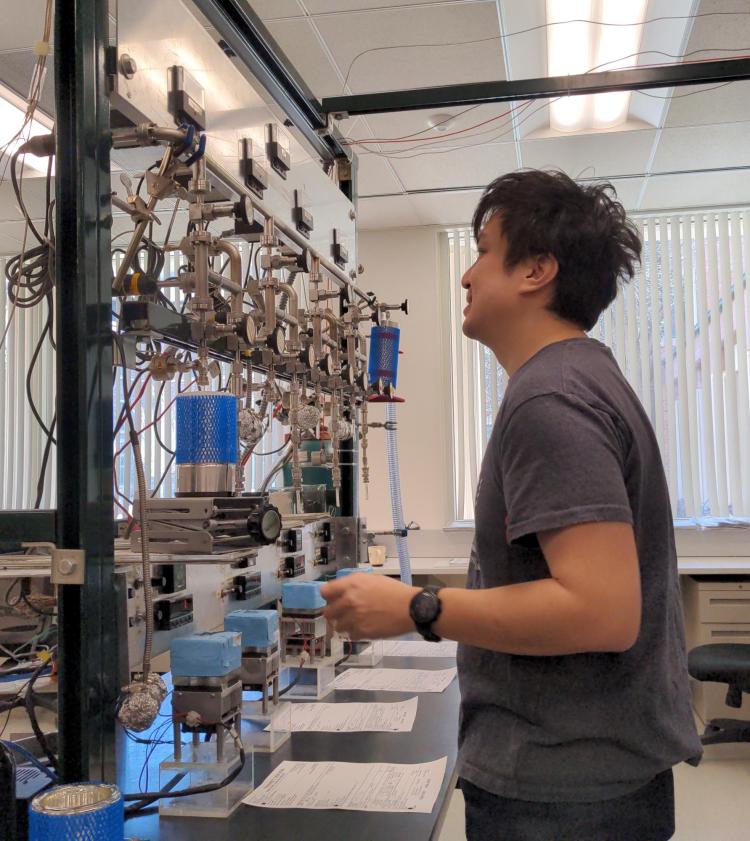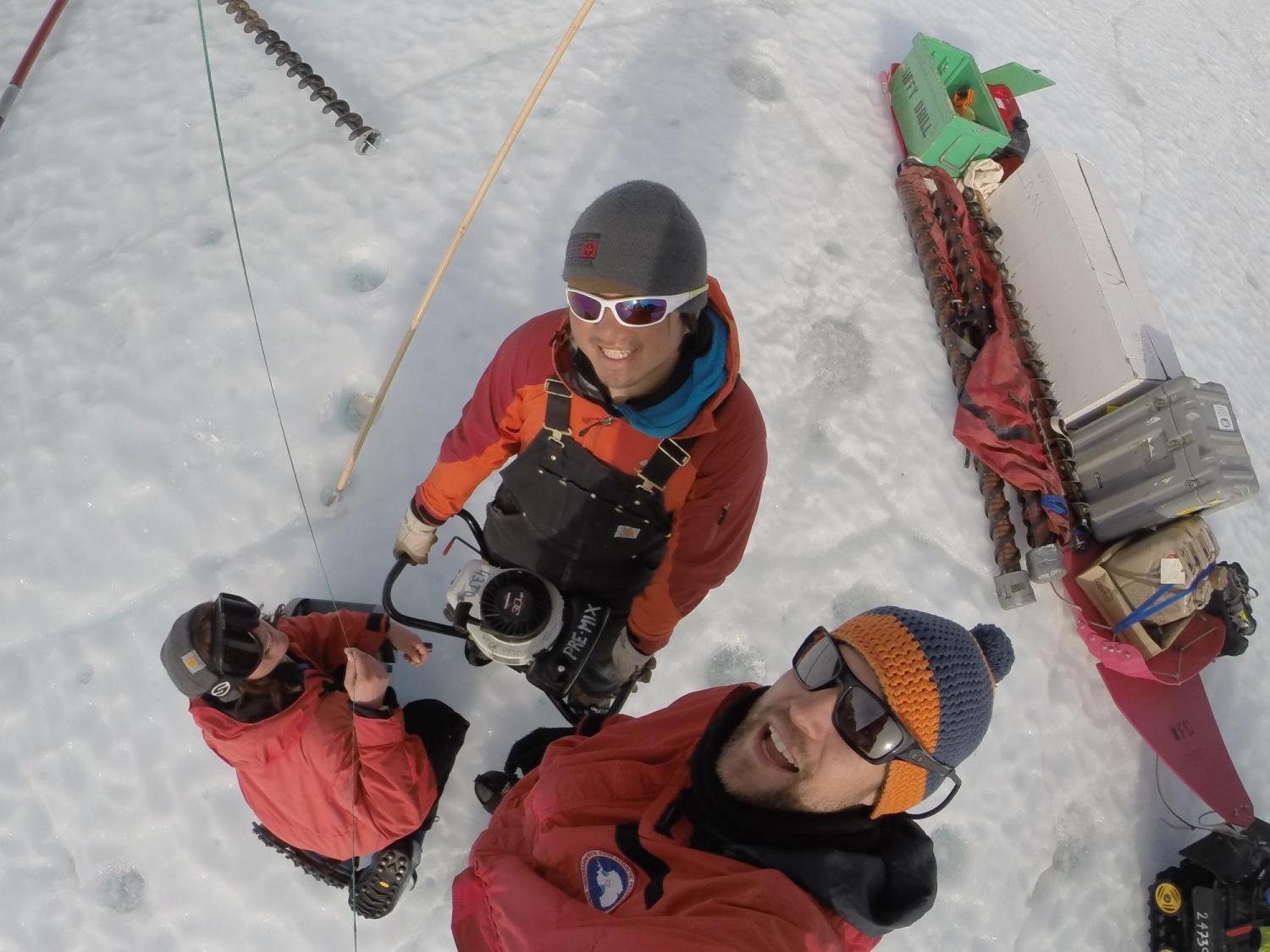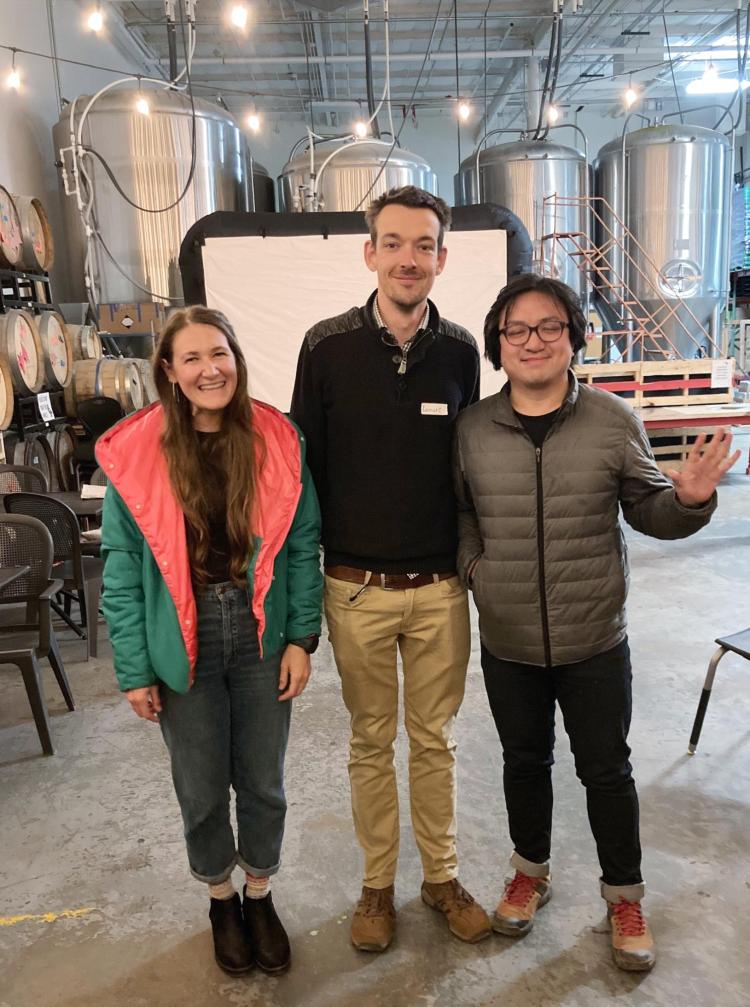Above: Sarah Shackleton (now at WHOI) and Michael Dyonisius collect a shallow ice core in Antarctica in the austral summer of 2015-2016.

Five questions & answers
Michael Dyonisius is a postdoc with INSTAAR’s Laboratory for AMS Radiocarbon Preparation and Research, a keen investigator of greenhouse gas fluxes, and an occasional ukulele-playing indie pop fan. Read on to learn about Michael’s work, inspirations, and life.
1. What is your main area of research?

Michael Dyonisius preparing samples in INSTAAR’s Laboratory for AMS Radiocarbon Preparation and Research.
My main area of research is using radiocarbon, or 14C, measurements from greenhouse gases in the atmosphere as tracers for Earth system processes. A major activity in our lab is processing air samples from the NOAA Global Greenhouse Gas Reference Network (NOAA GGRN) for measurements of 14C in carbon dioxide. 14CO2 is a straightforward tracer for CO2 emissions from fossil fuel, the main driver of anthropogenic climate change. We use 14CO2 measurements, in conjunction with atmospheric transport models, to verify emissions of fossil CO2 to the atmosphere. While solving for fossil CO2 emissions, we also resolve the amount of CO2 uptake and emissions from plants. Other than providing measurements of 14CO2, we also collect samples for measurements of 14C in methane from the NOAA GGRN Arctic sites. We use 14CH4 as a tracer for aged-methane emissions from old permafrost.
At INSTAAR we want to roughly double our 14CO2 sample throughput so that we can better constrain fossil CO2 emissions – so I'm working on expanding the graphitization line. I guess this is not as much a big science question as it is just meticulous laboratory hard work, assembling things together, making sure all the components are leak-tight, making sure all the homemade electronics are wired correctly, and making sure that the new lines can produce measurements with the same quality as the existing lines. Regarding data analysis, the most interesting thing I'm working on right now is our 10-year record of atmospheric 14CH4 from Alaska. There is this concern about how the Arctic regions have been warming faster than the rest of the planet and that the warming in the Arctic might melt the permafrost. Part of the carbon trapped in permafrost can be released as methane, which has a much larger warming potential than CO2. We have this unique 10 year, ongoing record of 14CH4 measurements from the Arctic that can be used to constrain how much old carbon previously locked in permafrost is mobilized and emitted to the atmosphere as methane.
2. How did you get interested in atmospheric gases in ice cores?
In the beginning, I didn't know much about atmospheric gases in ice cores. During my undergraduate studies at Boston University, I took a class from a professor who regularly conducted fieldwork in Antarctica. I saw all the cool polar explorer/scientist field pictures and just wanted to go for fieldwork in Antarctica. During my fieldwork in Antarctica, I met my then-future PhD advisor, Vas Petrenko. At the time, Vas was finishing his postdoc at INSTAAR and starting a new lab at the University of Rochester. I liked the idea of being a first-generation graduate student in a brand-new lab, building everything from scratch. What I didn't know then was that I was signing up to do arguably one of the most challenging measurements in all of geosciences, which is 14C of methane and carbon monoxide from ice cores. 14C is the rarest naturally occurring isotope of carbon. We were trying to measure 14C in methane and carbon monoxide, which are trace gases that exist at parts-per-billion abundance, from tiny air bubbles trapped in ice cores. We ended up reporting our 14CH4 measurements in the unit of (0.08 to 0.4) 14CH4 molecules per gram of ice. In retrospect, sometimes I still can't believe that the whole thing [my PhD project] kinda worked.

Michael Dyonisius works in Antarctica collecting shallow ice cores with Sarah Shackleton (Scripps Institution of Oceanography, now at Woods Hole Oceanographic Institute) and Bernhard Bereiter (Scripps Institution of Oceanography) in the austral summer of 2015-2016.
3. What is something that inspires you?
So lately, I have been working on a review chapter about radiocarbon studies in ice cores for the third edition of the Encyclopedia of Quarternary Science. In writing the manuscript, I learned a lot about the pioneering works of scientists with household names like Hans Oeschger, Willi Dansgaard, and Wally Broecker, and it is pretty cool that I could trace both the direct lineage of my scientific education (advisor of my advisor's advisor and so on) and current line of research back to these people. I'm standing on the shoulders of giants, so I guess that's really inspiring.
On any other given day, I can also talk about how I am inspired by Helen Love—an indie pop band that I like from Swansea, Wales. Their anti-establishment DIY ethics, lyrics with cutting humor and pop culture references, gnarly buzzsaw guitar that kinda does not match her dulcet voice, they're pretty awesome. Don’t take it from me, they got a personal endorsement from Joey Ramone, so they must be good (hear a short set of Helen Love songs on YouTube). Other than Helen Love, I'm also a big fan of other indie pop bands like Eux Autres, Tullycraft, Allo Darlin', and everything Lisa Marr does.
4. What do you like to do when you're not sciencing?

INSTAAR storytellers Emily Stuchiner (research scientist), Lennart van Maldegem (research staff), and Michael Dyonisius (postdoc). All participated in INSTAAR's first storytelling night, held at Sanitas Brewing Company in October 2023.
As mentioned above, I'm a big fan of indie pop. I like the DIY ethic, and anti-mainstream snobbery of indie labels like Sarah Records (RIP), Fortuna Pop (also RIP, I guess I just like dead artists, dead indie record labels are just better), and Alcopop! Records. I play a little bit of guitar, ukulele, and keyboard, but not very competently—in the true spirit of indie pop. Johnny Ramone showed that you can make it all the way to the Rock and Roll Hall of Fame by only doing downstrokes and power chords. I also like the outdoors, although liking the outdoors is kinda mainstream in Boulder. But I’m not going to ironically stay inside when we have good weather outside.
During my postdoc in Copenhagen, I also picked up volunteering in a community kitchen. I'm still settling in Boulder and have been pretty busy with science, but later on, I hope to integrate better into the community and find a local place to do volunteering work. Staying inside the ivory tower of academia is probably not very healthy.
5. What are most excited about for your future research?
My research so far has focused on conducting challenging experimental work. Other people might disagree, and I'm being a bit facetious here, but as an experimentalist, I see our work as just bashing our heads against a particular problem, doing troubleshooting by trial and error, and just out-stubborning the problem by trying a bunch of things until the problem somehow goes away. At the end, there is a certain pride in making the most leak-tight analytical system and precise measurements from hand-crafted vacuum connections. Going forward, I'm excited to work with people, both in-house at CU and at NOAA, to learn more about inverse atmospheric modeling and how to turn the isotope measurements that we made at INSTAAR into something useful and actionable for policymakers, like carbon dioxide and methane fluxes.

